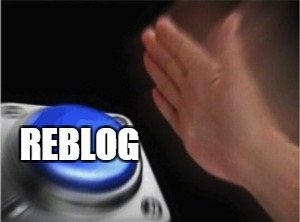Natural History In Zoological Gardens, By Frank E. Beddard. Illustration By Winifred Austen. 1905.

Natural History in Zoological Gardens, by Frank E. Beddard. Illustration by Winifred Austen. 1905.
Internet Archive
More Posts from Anisomorpha and Others
Why are rain frogs so round? What's /inside/ of them around such an itty bitty skeleton?
So it turns out this is a really interesting question.
The first thing we must be aware of is that rainfrogs as we see them in videos of them squeaking are not quite the same shape as they are when at rest:

[x]
But you are quite right, they are very round. This is exemplified by the skeletal photo you refer to:

[X]
So what are we seeing?
Well, firstly, note that the body cavity in these frogs actually envelops the femurs, such that only the tibiofibula (fused in frogs) and the tarsals and metatarsals are outside the body. The arms are quite similarly enveloped, but a bit of the humerus does extend outside the body cavity too. This predisposes them to a rounder body shape.
Next, note the ilia - the U-shaped bone in the pelvic region. These in some breviceptid frogs are synostotically fused with the sacrum - that is to say, they are bound by bone-based connections to the bow-shaped vertebra at their tips. This whole joint seems to be quite smooth, and as a consequence, the back of the frog is quite smooth. The other thing we can see here is that the urostyle (i.e. the frog version of a coccyx) juts quite far beyond the ischium and pubis. This extends the body cavity beyond the hips. Note also that the pelvic girdle seems to be largely below the spine, rather than the typical position for frogs behind it and continuous with it. This makes the legs sit below the spine, rather than at its end, enhnacing the vertical roundness of the animal.
Next, let’s talk some soft tissue. Now, I’m not as familiar with soft-tissue in frogs as I am their skeletons, so you’ll have to bear with me a bit (rawr). Beddard (1908!!) studied the soft tissue of Breviceps verrucosus Rapp 1842. It seems that the majority of the body of these frogs is actually muscle. Beddard noted that muscles join the leg at the knee that extend into the body cavity, such that the inclusion of the thigh in the body cavity is further accentuated by musculature. The rectus abdominalis muscle is unusually large, extending from the lower abdomen up and around the sides of the body. Indeed, this large size appears to be the pattern with all of the major muscles, though in the throat the typical arrangement of large and small muscles is somewhat reversed. On the lateral side of the head, there is a substance that is not muscle, but appears to be loose tissue in which sits what is apparently the thymus gland.
There is a very large gap between the end of the urostyle and the anus (one fifth of the total length of the frog), in which there are almost no muscles, save for the one surrounding the lower cloaca. On either side of this area, between the posterior-most muscles of the thigh, lie two large ‘lymph-hearts’, as described by Beddard. These are between one quarter and one third of the total length of the frog. A further lypmh-sac sits between these lymph-hearts and the skin of the femoral region, and they are thus probably analogous to the femoral lymph-sacs of other frogs.
I find it interesting that Beddard (1908) did not mention any glandular formations in the dorsal region. As is evidence from many images (see below), these frogs are able to secrete a white, sticky, noxious substance from their skin (which they actually have to use during amplexus, as the male is too small relative to the female to mount her properly, and so he sticks himself to her with his glandular glue… kinky).

[x]
These glands do not apparently take up a great deal of the cutaneous tissue, and so I suppose are of no consequence to the size of the frog, especially relative to its enormous muscles.
The diet of these frogs consists almost exclusively of hymenopterans and isopterans (ants and termites). Neither of these insect groups are particularly fatty, so it is little surprise that their bodies appear to contain no large fat deposits - fatty bodies extend from the gonads up to the lungs and heart, but these comprise only a tiny fraction of the frog’s mass, and don’t contribute to the round shape. Instead, their bodies are extremely muscular, allowing them to be adept burrowers, ideal for their fossorial lifestyle.
So TL;DR: rain frogs are little balls of muscle (maybe the largest muscle mass relative to body mass of any vertebrate? science just doesn’t know).

Ref:
Beddard, F.E. 1908. On the Musculature and other Points in the Anatomy of the Engystomatid Frog, Breviceps verrucosus. Proceedings of the Zoological Society of London, 1908:11-41 [x]
I’m learning about worms.
Young fire bug eating stink bug eggs
REBLOG if you have amazing talented artist friends!

my "i don't need a rabies shot because i eat the vaxx-laced meatballs that fish & wildlife leaves out for the coyotes" shirt has people asking a lot of questions already answered by my shirt
need to post my favourite tweet in the entire world

How i sleep knowing I’ll never bring a child into this world

having a pet fish is so funny. yeah there’s a guy in my house who can move in more dimensions than me, and i’ve permanently trapped him in a 2ft glass cube
One thing that pisses me off is people seeing fish in aquariums (the establishments, not home aquariums) and being like “It’s so sad because the ocean is so big and the tank is so small and they’ll never know freedom blah blah blah-“ I’m not talking about sharks and marine mammals here but the majority of fish are not at all bothered by being in an aquarium instead of the open ocean. Like, I personally would love to be a little clown fish in one of those big reef tanks. Fed regularly. Whole team of people monitoring my health and well-being. No predators. Medicated if I show signs of illness. Aquarium fish have cushy gigs in comparison to their wild companions.
On lost love







Vita Sackville-West, Everything Everywhere All at Once, Lee Martens, ?, ?,?, Clementine von Radics
-
 schizophreniasuperspreader reblogged this · 1 month ago
schizophreniasuperspreader reblogged this · 1 month ago -
 campanellacat reblogged this · 1 month ago
campanellacat reblogged this · 1 month ago -
 beanerbrujx reblogged this · 1 month ago
beanerbrujx reblogged this · 1 month ago -
 hadit418 liked this · 2 months ago
hadit418 liked this · 2 months ago -
 namorailecec liked this · 2 months ago
namorailecec liked this · 2 months ago -
 00l000 liked this · 2 months ago
00l000 liked this · 2 months ago -
 mooonborne reblogged this · 2 months ago
mooonborne reblogged this · 2 months ago -
 celestial-ceremony reblogged this · 2 months ago
celestial-ceremony reblogged this · 2 months ago -
 intranara reblogged this · 2 months ago
intranara reblogged this · 2 months ago -
 mothervulture reblogged this · 2 months ago
mothervulture reblogged this · 2 months ago -
 mr-top-secret reblogged this · 2 months ago
mr-top-secret reblogged this · 2 months ago -
 mr-top-secret liked this · 2 months ago
mr-top-secret liked this · 2 months ago -
 faggotfungus reblogged this · 2 months ago
faggotfungus reblogged this · 2 months ago -
 wizardkoolkelpie reblogged this · 2 months ago
wizardkoolkelpie reblogged this · 2 months ago -
 wizardkoolkelpie liked this · 2 months ago
wizardkoolkelpie liked this · 2 months ago -
 verminhost reblogged this · 2 months ago
verminhost reblogged this · 2 months ago -
 homeplanets reblogged this · 3 months ago
homeplanets reblogged this · 3 months ago -
 under--the--radar reblogged this · 3 months ago
under--the--radar reblogged this · 3 months ago -
 littlefruitbigworld liked this · 3 months ago
littlefruitbigworld liked this · 3 months ago -
 old-images reblogged this · 3 months ago
old-images reblogged this · 3 months ago -
 alporquia liked this · 3 months ago
alporquia liked this · 3 months ago -
 beelzebubs-titties liked this · 3 months ago
beelzebubs-titties liked this · 3 months ago -
 girlwiththefurbytattoo liked this · 3 months ago
girlwiththefurbytattoo liked this · 3 months ago -
 honeycomb-butch liked this · 3 months ago
honeycomb-butch liked this · 3 months ago -
 woodlnds reblogged this · 3 months ago
woodlnds reblogged this · 3 months ago -
 biorusted reblogged this · 3 months ago
biorusted reblogged this · 3 months ago -
 hidingforacause liked this · 4 months ago
hidingforacause liked this · 4 months ago -
 caffeinatedkettle liked this · 4 months ago
caffeinatedkettle liked this · 4 months ago -
 catchaspark liked this · 4 months ago
catchaspark liked this · 4 months ago -
 scribblingface reblogged this · 4 months ago
scribblingface reblogged this · 4 months ago -
 mrjoeytheguy liked this · 4 months ago
mrjoeytheguy liked this · 4 months ago -
 coconutcanary liked this · 4 months ago
coconutcanary liked this · 4 months ago -
 orangekooleraide liked this · 4 months ago
orangekooleraide liked this · 4 months ago -
 pupucino liked this · 4 months ago
pupucino liked this · 4 months ago -
 azan666 liked this · 4 months ago
azan666 liked this · 4 months ago -
 miscellaneousiv liked this · 4 months ago
miscellaneousiv liked this · 4 months ago -
 mickeysalamander liked this · 4 months ago
mickeysalamander liked this · 4 months ago -
 haeni liked this · 5 months ago
haeni liked this · 5 months ago -
 monseulangel reblogged this · 5 months ago
monseulangel reblogged this · 5 months ago -
 uhhhhhhhhhhh-idk liked this · 5 months ago
uhhhhhhhhhhh-idk liked this · 5 months ago -
 paperlilyy reblogged this · 5 months ago
paperlilyy reblogged this · 5 months ago -
 polnereff22 liked this · 5 months ago
polnereff22 liked this · 5 months ago -
 shudderish reblogged this · 5 months ago
shudderish reblogged this · 5 months ago -
 holyhellbender reblogged this · 5 months ago
holyhellbender reblogged this · 5 months ago -
 nerd-for-bugs liked this · 5 months ago
nerd-for-bugs liked this · 5 months ago -
 litgrimace reblogged this · 5 months ago
litgrimace reblogged this · 5 months ago -
 gloomybento liked this · 5 months ago
gloomybento liked this · 5 months ago -
 lulsyeys liked this · 5 months ago
lulsyeys liked this · 5 months ago -
 ye-old-gremlin-cave liked this · 5 months ago
ye-old-gremlin-cave liked this · 5 months ago -
 lyanhmiu liked this · 5 months ago
lyanhmiu liked this · 5 months ago

Art blog @morganwiemerart | she/her, 23 | Reblog interesting creatures and personal stuff here
296 posts